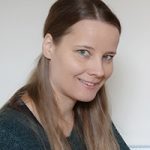Ever noticed how aloe vera seems to be everyone’s favorite for skin problems? It’s not just good for soothing burns; it’s also great for treating inflammatory skin conditions such as perioral dermatitis. With its natural soothing and moisturizing properties, aloe vera is perfect for calming your skin and improving its overall health.
In this article, we’re going to show you how aloe vera can help with perioral dermatitis and enhance your skin’s well-being. Discover how to use this natural remedy effectively, making it a key part of your skincare routine.
Table of Contents
- Understanding Perioral Dermatitis
- What is Aloe Vera?
- 7 Benefits of Using Aloe Vera on Your Skin
- Is Aloe Vera Safe to Use for Perioral Dermatitis?
- How to Use Aloe Vera for Perioral Dermatitis
- Choosing the Best Aloe Vera Products: Top Tips
Understanding Perioral Dermatitis
Perioral dermatitis is an inflammatory skin condition characterized by a rash around the mouth, and sometimes it can spread to areas around the nose and eyes. This condition manifests as small, red bumps that can cause discomfort, including itching or burning sensations. The appearance and severity of symptoms can vary from person to person, making it a somewhat unpredictable condition to manage.
The exact causes of perioral dermatitis are not fully understood, but several factors are known to contribute to its development. These include the prolonged use of topical steroids, certain cosmetic products, environmental factors, and hormonal changes. Identifying and avoiding these triggers can be a key part of managing and reducing flare-ups.
Recognizing the symptoms and potential triggers of perioral dermatitis is crucial for effective treatment and care. With the right approach, including gentle, natural remedies like aloe vera, managing this condition and improving skin health is entirely possible.
What is Aloe Vera?
Aloe vera is a short, thick-stemmed succulent known for its spiky leaves and remarkable healing properties. Originating from North Africa, this plant has gained worldwide popularity, not only for its aesthetic appeal but also for its medicinal benefits.
Of the more than 300 species, the Aloe Barbadensis Miller from South Africa is most favored in skincare, thanks to its high concentration of beneficial compounds. The gel inside aloe vera leaves is a treasure trove of vitamins, minerals, enzymes, polysaccharides, phenolic compounds, and organic acids. These components make aloe vera incredibly effective for a variety of skin issues.
To harness these benefits, the gel is gently extracted from the leaves and can be used as is or dried and powdered for inclusion in skincare products. This versatility is what makes aloe vera a cornerstone ingredient in the beauty industry, offering a range of benefits for the skin.

7 Benefits of Using Aloe Vera on Your Skin
1. Anti-inflammatory Benefits
Aloe vera is great for soothing inflamed skin, thanks to a powerful mix of anti-inflammatory compounds. Among these, aloin, salicylic acid, and the enzyme bradykinase stand out for their ability to diminish swelling and soothe irritation.
Research is still figuring out how these compounds work together, but their combined effect makes aloe vera really good at healing. Plus, it has plant hormones that help with healing, making it a great choice for soothing skin inflammation.
Its ability to calm irritated skin makes it an ideal remedy for chronic inflammatory skin conditions like psoriasis, eczema, and perioral dermatitis.
2. Helps with Acne
Aloe vera is a key player in combating acne, with research highlighting its effectiveness. Its anti-inflammatory, antioxidant, and antibacterial properties help soothe and treat the skin.
When combined with other acne treatments like tretinoin cream, it significantly improves the healing of mild to moderate acne. Further evidence supports aloe vera’s ability to directly combat acne-causing bacteria, making it a versatile and effective component in acne management strategies.
3. Soothes and Heals Sunburns
Aloe vera is a trusted remedy for sunburns, loaded with vitamins C, E, and A. These vitamins protect against the sun’s harmful effects that lead to skin aging and damage. Additionally, aloe vera contains flavonoids and tannins, powerful antioxidants that help shield the skin. Applying aloe vera gel on sunburned areas not only cools and soothes but also helps the skin heal from UV damage.
4. Hydrates and Moisturizes the Skin
Aloe vera is a powerful moisturizer suitable for all skin types, especially beneficial for those with dry skin. Its humectant properties draw moisture into the skin, boosting hydration levels. This natural gel not only quenches thirsty skin but also maintains moisture without leaving a greasy residue, making it an ideal choice for keeping skin soft, supple, and hydrated.
5. Fights Bacteria on the Skin
Aloe vera contains anthraquinones, natural compounds with strong antibacterial properties. These help fight bacteria on the skin, making aloe vera effective against acne, infections, and even superficial cuts. By preventing bacteria growth, aloe vera supports healthy and clear skin.
6. Effective Against Fungal Infections
Aloe vera also showcases antifungal properties, with studies indicating that proteins in its gel are effective against yeast infections like Candida parapsilosis. This highlights aloe vera’s role in tackling different fungal skin conditions, offering a natural remedy for maintaining healthy skin.
7. Speeds up Wound Healing
Aloe vera is known to help wounds heal faster. It has special enzymes and natural sugars that speed up skin repair. This helps in making more collagen, shrinking wounds, and increasing hyaluronic acid, all of which are key for quick and effective healing.
Is Aloe Vera Safe to Use for Perioral Dermatitis?
Yes, aloe vera is safe and beneficial for managing perioral dermatitis. Its natural anti-inflammatory properties can soothe the skin, reducing irritation and inflammation associated with perioral dermatitis and similar conditions like eczema and psoriasis.
Aloe vera gel, rich in vitamins, enzymes, and phenolic compounds, works to calm down irritation and promote the skin’s healing process.
For those dealing with dry, red, flaky, and inflamed skin, aloe vera’s moisturizing effect offers hydration and reduces flakiness without the side effects often seen with antibiotic treatments. Regular application can provide relief and help prevent further irritation, making it a gentle, effective option for those with perioral dermatitis, as long as there’s no allergy to the plant.
How to Use Aloe Vera for Perioral Dermatitis
Aloe vera can be used in various ways – either as a stand-alone or combined with other treatments. Below are recommendations on how to use this remedy to treat perioral dermatitis:
Pure and fresh aloe vera gel can be directly applied daily to the irritated parts of your face for instant relief. Once applied, let the skin completely absorb it until dry.
Over-the-counter gel or cream treatments containing aloe vera extract or powder are suitable for treating perioral dermatitis.
Aloe vera gel can be mixed with other natural or essential oils that are lightweight and won’t cause congestion to the affected areas. It can be combined with other naturally soothing ingredients like honey and turmeric to calm down inflammation.
Choosing the Best Aloe Vera Products: Top Tips
Many skincare products are advertised as pure aloe vera gel or claim to contain pure aloe vera gel. But most often than not, they do not have enough aloe vera or sometimes none at all to deliver the expected benefits.
To avoid falling prey to marketing scams, here are tips on how to make sure you are purchasing quality aloe vera products for your skin:
- Make sure your product is labelled pure aloe vera gel. Some brands use tricky wordings to make you believe their product contains 100% pure aloe vera gel. Labels that read “100% gel” or “Aloe vera 100% gel) mean the product is pure gel but not pure aloe vera gel.
- If aloe vera appears far down your product’s ingredient list, it means your product contains more additives (thickeners, fragrance, colour, alcohol) than aloe. The order in which products are listed indicated their concentration from highest to lowest. You want to make sure that aloe vera is listed among the first five ingredients for better efficacy.
- Do not buy any products that contain aloe latex, as this is a laxative that could have cancerogenic effects on the skin.
- Avoid aloe vera products that contain additives that could irritate your skin. These include alcohol, fragrances, and colours.
- For the best quality possible, make sure your aloe vera gel is certified 100% organic.
Related articles:
The Ordinary Products for Perioral Dermatitis
Treating Perioral Dermatitis during pregnancy
How to use Azelaic Acid for Perioral Dermatitis

Petra Nakashian (previously Kravos) is a dedicated natural health and beauty blogger, driven by the loss of her parents to cancer, which led her to meticulously research beauty product ingredients. With over 10 years of experience, her in-depth knowledge has made her a trusted expert in the field. Founder of Be Healthy Now and Green Beauty Talk, Petra recently expanded her expertise with Beauty Insights Hub, exploring a wider range of beauty treatments. Committed to transparency and honesty, her work is a vital resource for navigating the complex world of beauty.

